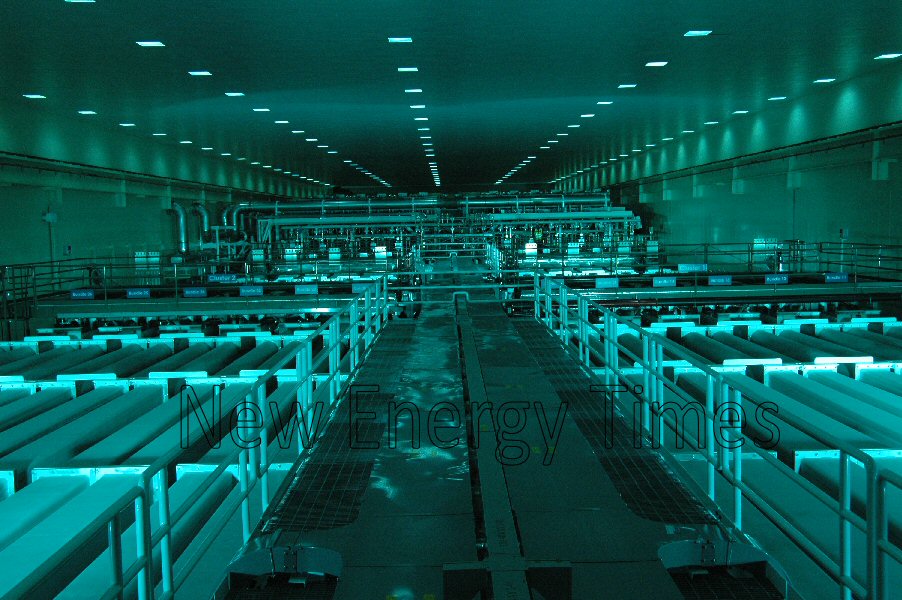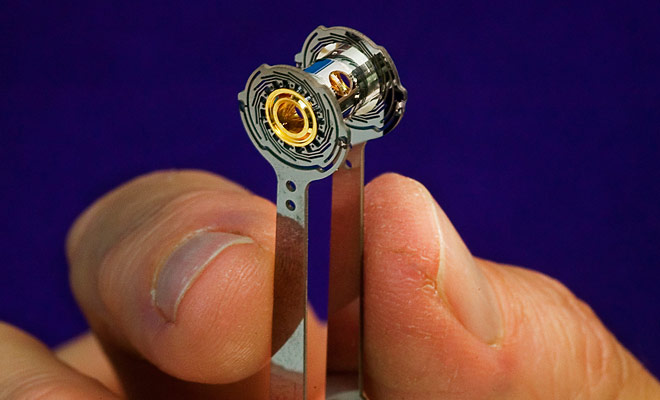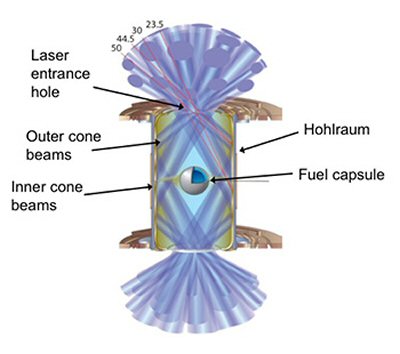#73 National Ignition Facility Achieves Ignition in Historic Nuclear Fusion Experiment

Some of the 192 lasers in the U.S. National Ignition Facility (Photo: S. Krivit)
By Steven B. Krivit
August 29, 2021
New Energy Times has learned from scientists at the U.S. fusion lab that the recent results from the National Ignition Facility indicate that the lab has not only approached the threshold of nuclear fusion ignition but also achieved this historic breakthrough.
The National Ignition Facility (NIF) is a nuclear fusion research installation that is privately operated by Lawrence Livermore National Security LLC on behalf of the publicly owned Lawrence Livermore National Laboratory (LLNL). It is located in Livermore, California, just east of San Francisco.
The lab issued a press release on Aug. 17, 2021, announcing that its Aug. 8, 2021, experiment had reached the “threshold of fusion ignition.” However, during our conversations with Kimberly S. Budil, the director of the lab, and Omar A. Hurricane, the chief scientist for the inertial confinement fusion program at the lab, and after our discussions about the data, they unofficially acknowledged that the fusion device had accomplished this historic threshold.
Laser fusion is an informal term for a type of inertial confinement fusion. Whereas most experimental fusion devices in the world initiate fusion through high temperatures, laser fusion does so by high compression.
In the NIF laser fusion experiment, electricity from the grid is sent into the world’s largest array of lasers. (See photos here) That bank of 192 lasers shoots optical energy into a tiny target chamber called a hohlraum. Inside the hohlraum is the fuel capsule. It contains a mixture of hydrogen isotopes.

The NIF hohlraum target (Photo: LLNL)

Diagram of the NIF hohlraum showing the fuel capsule (Diagram: LLNL)
When sufficient energy reaches the fuel, fusion reactions take place. The lab uses three metrics to measure progress.
Starting from the outside of the hohlraum and going in, the first metric is called target gain. This is the ratio of energy produced by the fusion reaction to the energy delivered to the entire hohlraum target. The second metric is called the capsule gain. This is the energy produced by the fusion reaction to the energy delivered to the fuel capsule. The third metric is called fuel gain. This is the energy produced by the fusion reaction to the energy delivered to the fuel.
For the Aug. 8, 2021, results, here are the three gain values:
We Have Ignition
New Energy Times reviewed the gain values above with Hurricane for accuracy. We then located several pages on the LLNL Web site, like this page, which defines ignition as the fusion process generating “energy equaling or exceeding the energy delivered to the capsule.” The Aug. 8 capsule gain achieved a value of 5.6, which is 5.6 times greater than the defined LLNL threshold for ignition. We presented this analysis to Hurricane for comment.
“Yes, many technical assessments of ignition have been made indicating ignition, but we are still processing the data,” Hurricane wrote. “Our team is waiting on claiming ignition until we dot the i’s and cross the t’s. There are many technical definitions of ignition, so we are going through them. This work will be presented in a peer-reviewed publication before we claim it.”
Budil was conditionally willing to agree that, according to the lab’s definition, it had achieved ignition, but she acknowledged that a 1997 report prepared by members of the fusion community under the auspices of the National Academies sets a reference for ignition based on target gain rather than capsule gain.
“Yes, although the National Academies adopted the definition of target gain = 1 for ignition, we do not want to push on this until we have more data and hopefully a bit higher yield,” Budil wrote. “[There is] no official declaration of ignition from us, although others have made this exact point in print.”
Throughout the 24 years since that National Academies’ report was published, LLNL has published on many of its Web pages statements that capsule gain, rather than target gain, is the lab’s reference measurement for ignition.
The Question of Energy
Before we talk about laser fusion as a possible source for energy, it’s crucial to know that the primary purpose of NIF is to test nuclear weapons materials in an enclosed space rather than for fusion energy research.
So what is the likelihood that the NIF device might ever demonstrate that laser fusion can be a source of energy? “Zero chance,” Hurricane wrote. “The NIF was never designed for net energy production since it’s just a research facility.” Here’s the math for the overall device gain, normalizing the electrical input energy to thermal energy based on a 33 percent conversion efficiency:

It’s less accurate, but some people may prefer to compare the electrical input value to the thermal output value. Here’s what that calculation looks like:

The Aug. 8, 2021, experiment, which produced 1.3 megajoules of energy, did so at an energy cost of at least the 400 megajoules required for the lasers. Regardless of whether the capsule gain value or the target gain value is used as the reference for the definition of fusion, the NIF device lost at least 99.7 percent of the energy it consumed.
The lab publishes this claim on its Web site: “Achieving ignition would be an unprecedented, game-changing breakthrough for science and could lead to a new source of boundless clean energy for the world.” The first part is credible; the second part strains credulity. The claim has been published on the LLNL Web site at least since 2014, long before Budil was in charge.

